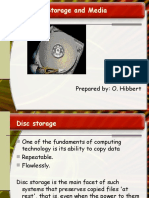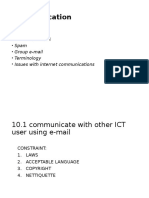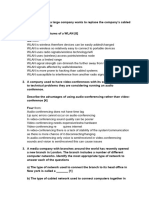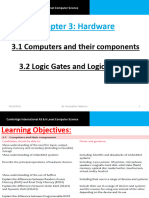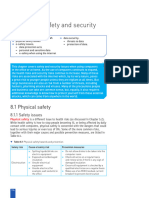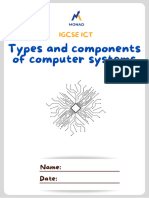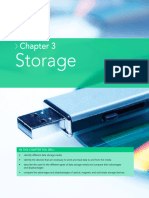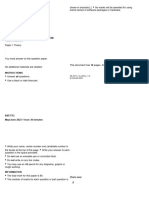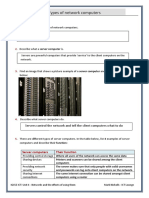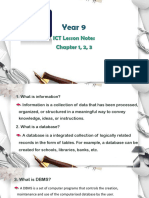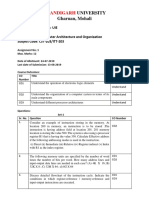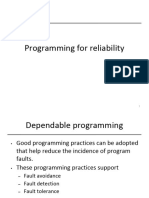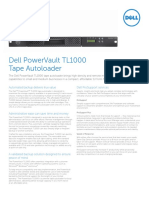0% found this document useful (0 votes)
222 views39 pagesStorage Devices and Media
Mrs. Anusha Ahuja's presentation discusses data storage devices and media. It defines data storage as putting data in a known location so it can be retrieved later. The main memory of a computer is RAM and ROM, with ROM being non-volatile and storing startup instructions, and RAM being volatile and storing programs and data temporarily. Common storage media include hard drives, which can store terabytes of data but are internal, and portable hard drives which are removable but smaller in size. Magnetic storage devices like hard drives and floppy disks store data in magnetized dots on rotating discs or magnetic tape.
Uploaded by
anushasahujaCopyright
© Attribution Non-Commercial (BY-NC)
We take content rights seriously. If you suspect this is your content, claim it here.
Available Formats
Download as PPTX, PDF, TXT or read online on Scribd
0% found this document useful (0 votes)
222 views39 pagesStorage Devices and Media
Mrs. Anusha Ahuja's presentation discusses data storage devices and media. It defines data storage as putting data in a known location so it can be retrieved later. The main memory of a computer is RAM and ROM, with ROM being non-volatile and storing startup instructions, and RAM being volatile and storing programs and data temporarily. Common storage media include hard drives, which can store terabytes of data but are internal, and portable hard drives which are removable but smaller in size. Magnetic storage devices like hard drives and floppy disks store data in magnetized dots on rotating discs or magnetic tape.
Uploaded by
anushasahujaCopyright
© Attribution Non-Commercial (BY-NC)
We take content rights seriously. If you suspect this is your content, claim it here.
Available Formats
Download as PPTX, PDF, TXT or read online on Scribd
/ 39

